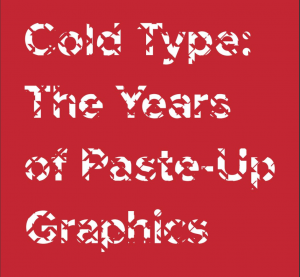 If you’re under a certain age, you’d be forgiven for failing to recognise these tools of the trade many veteran comic creators and comics editors used to create their work. Finding an online edition of the Cold Type: The Years of Paste-Up Graphics exhibition catalogue brought back lots of memories. Not all of them pleasant, of course – who didn’t find Rotring‘s claims that their pens were “easy to clean” was often outweighed by the darn things splurking ink at the most inopportune moments, or despair at the frustration of finding no-one had ordered new ribbons for the state-of-the-art IBM typewriter?
If you’re under a certain age, you’d be forgiven for failing to recognise these tools of the trade many veteran comic creators and comics editors used to create their work. Finding an online edition of the Cold Type: The Years of Paste-Up Graphics exhibition catalogue brought back lots of memories. Not all of them pleasant, of course – who didn’t find Rotring‘s claims that their pens were “easy to clean” was often outweighed by the darn things splurking ink at the most inopportune moments, or despair at the frustration of finding no-one had ordered new ribbons for the state-of-the-art IBM typewriter?
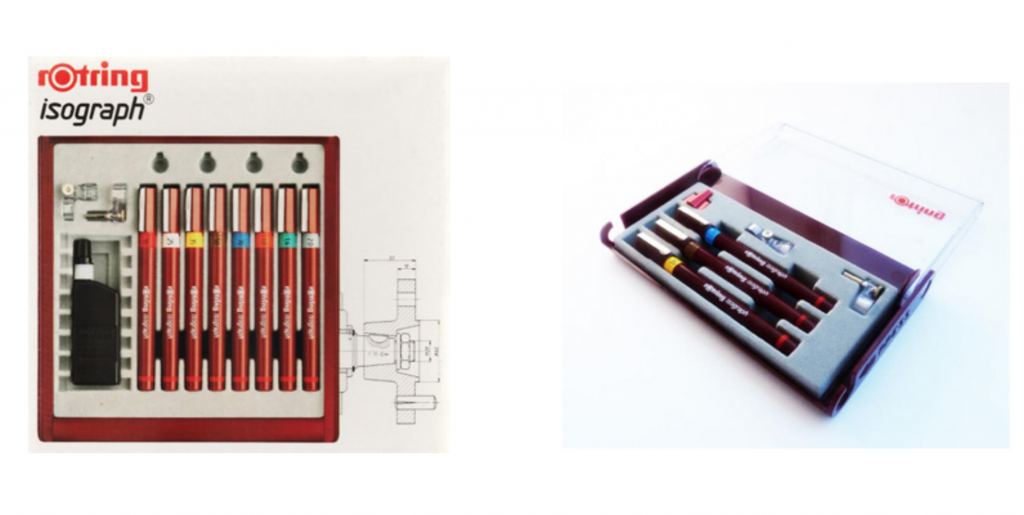
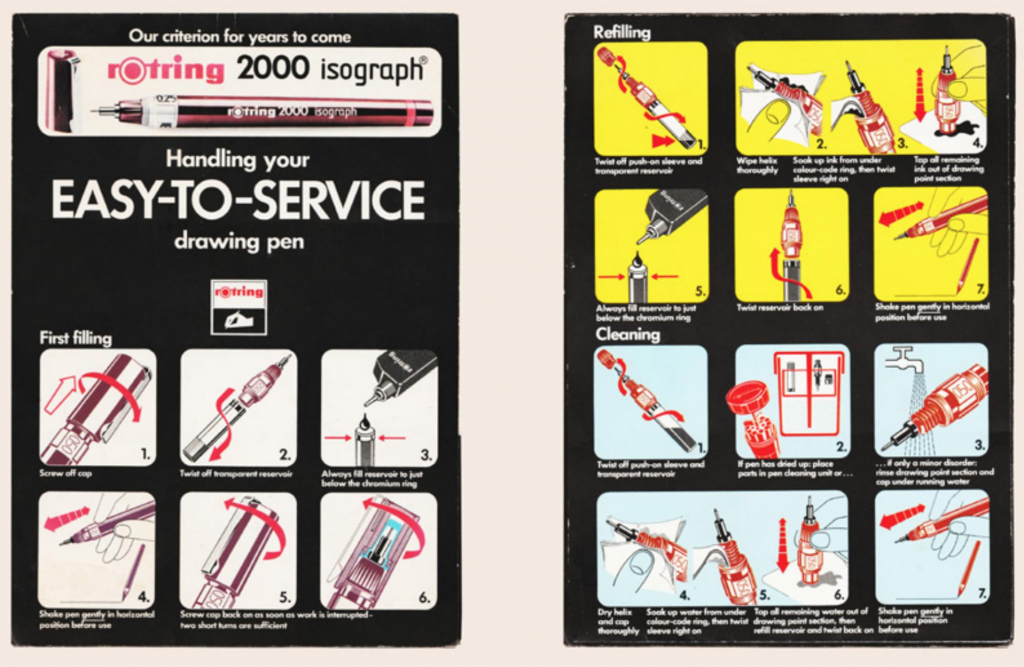
Not to mention the pain of finding there was no second “C” on an expensive Letraset sheet, just as you decided to used a 72pt ACCOMMODATION headline in the student newspaper your were editing, and you had no PMT camera? (No-one appeared to notice the omission…)
Over the last 30 years, desktop publishing has revolutionised the way the graphic design industry works. The typical workspace of a graphic designer today is pretty much a virtual one, with almost everything created digitally. This transformation of the workspace indicates a shift in the profession from the figure of a craftsperson to that of a creative technical expert, from the skilled maker to the digital thinker.
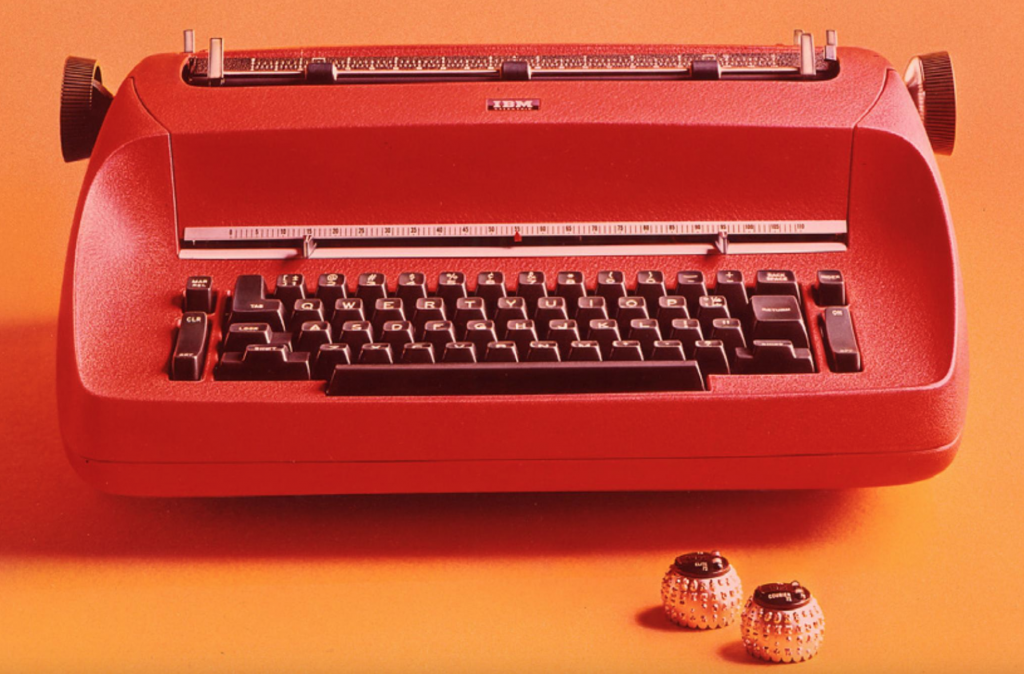
The IBM Selectric. State of the art typesetting in 1979…
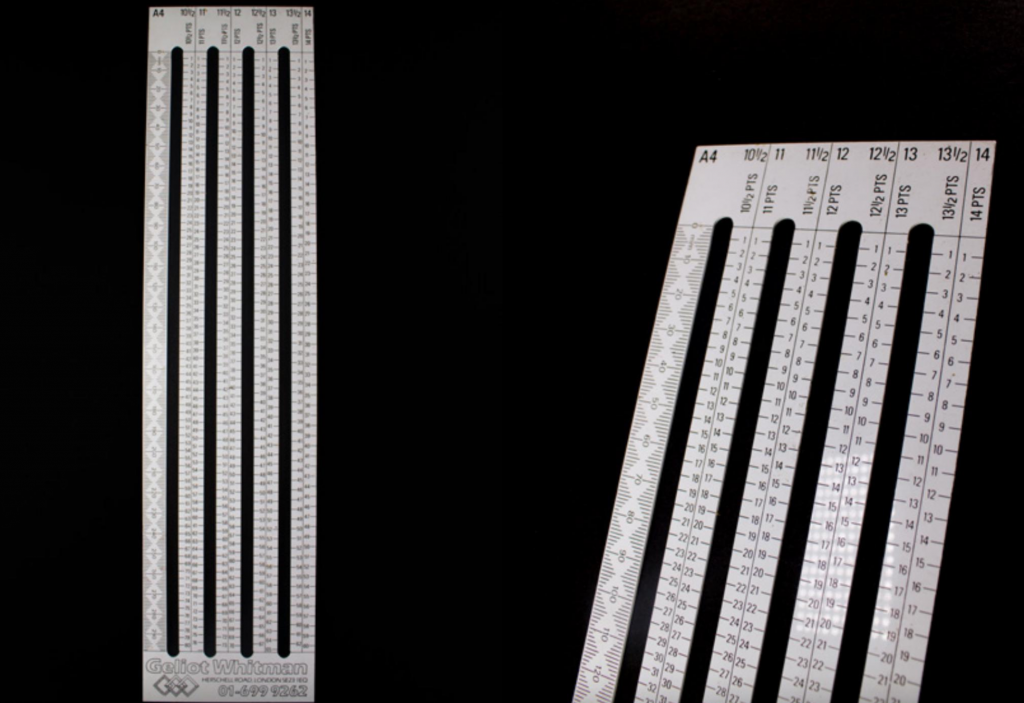
Pica Ruler
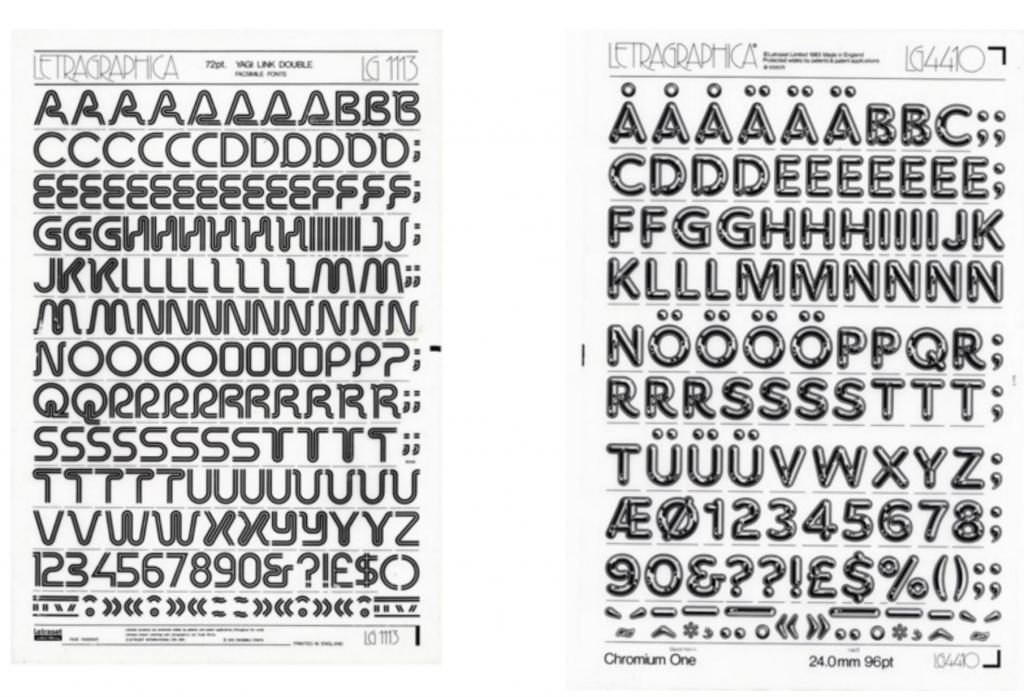
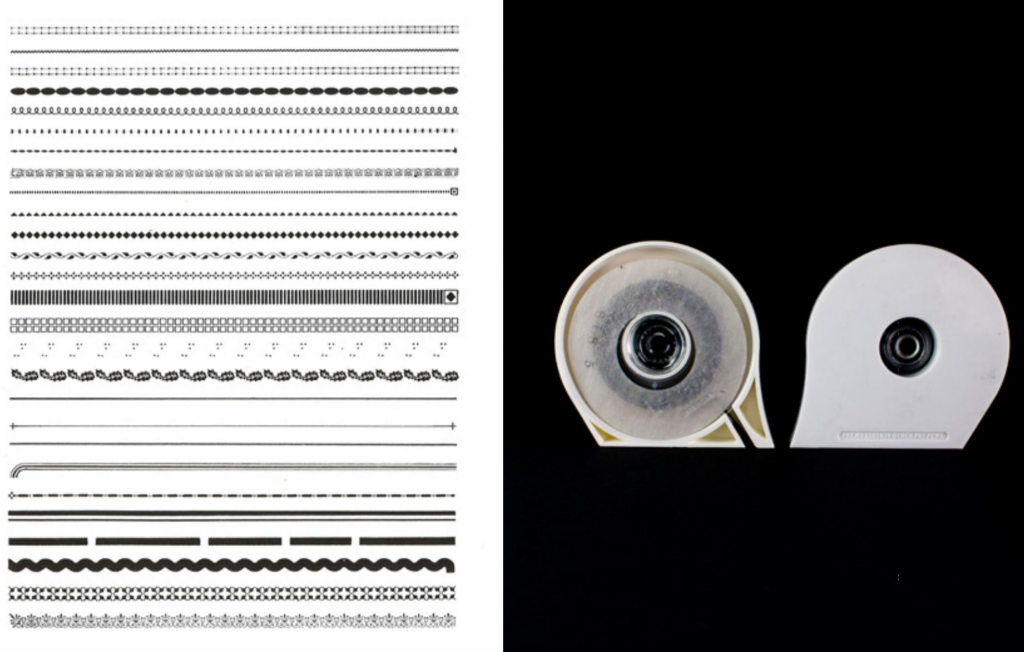
Ever so easy to use… honest!
An exhibition, Cold Type: The Years of Paste-Up Graphics, curated by Theodora Pangos and hosted by Birmingham City University‘s Parkside Galley back in 2017, explored the graphic design production of the 1960s through to the 1980s – showcasing a collection of cold type tools used by the graphic artist to produce print-ready solutions.
Focusing on previous techniques and forms used in print design, the exhibition looked at innovative tools that pushed the field of graphic design in new directions and helped shape current tools that are ubiquitous today in the form of software.
Theodora has posted the exhibition catalogue on Issuu, noting it was created with the assistance of Derek Duff, among many others, best known for his work over almost three decades for the Royal Albert Memorial Museum, but who also enjoyed a brief foray into comics, drawing “The Bushwacker” for the final issue of Denis Gifford‘s short-lived Ally Sloper comic magazine, published in 1977, and a number of other comics for the Portuguese market.

The opening page of “The Bushwacker” by designer Derek Duff for Ally Sloper No.4, his only strip published in the UK
Sadly, the rate of pay proved far from commensurate with the work put in, and he moved into design, which, from his work for Gifford, seems very much to be comics loss. Now retired, he has now returned to the world of art as a painter.
You can find the catalogue here on Issuu, where you will either be bemused by all the arcane tools once used to create magazine layouts, comic layouts, client presentations and much more – or, like me, look back on a an age when the day wasn’t spent staring at a computer screen, wrestling with the intricacies of Adobe’s bloated and frankly over-priced subscription-based software, with a great deal of affection…
• There are pictures of the exhibition here on Behance and Theodora is online at www.theodorapangos.co.uk
• The Parkside Gallery is online at blogs.bcu.ac.uk/parksidegallery
With thanks to Tom Vinelott at Action Transfers for sending me down this particular rabbit hole!
The founder of downthetubes, which he established in 1998. John works as a comics and magazine editor, writer, and on promotional work for the Lakes International Comic Art Festival. He is currently editor of Star Trek Explorer, published by Titan – his third tour of duty on the title originally titled Star Trek Magazine.
Working in British comics publishing since the 1980s, his credits include editor of titles such as Doctor Who Magazine, Babylon 5 Magazine, and more. He also edited the comics anthology STRIP Magazine and edited several audio comics for ROK Comics. He has also edited several comic collections, including volumes of “Charley’s War” and “Dan Dare”.
He’s the writer of “Pilgrim: Secrets and Lies” for B7 Comics; “Crucible”, a creator-owned project with 2000AD artist Smuzz; and “Death Duty” and “Skow Dogs” with Dave Hailwood.
Categories: Art and Illustration, Creating Comics, downthetubes News, Events, Links, Other Worlds
Reading about comics tends to put me in a silly frame of mind. “no PMT camera?” – “Ooh, er, missus”, as Frankie Howerd might have replied.
Back in the days of submitting mounted colour transparencies to picture libraries, each trannie needed mounting (oh, dear – another Frankie Howerd moment) and captioning before submission (!); writing serial numbers on the plastic or card mounts and providing accompanying typed lists was second best. A friend who had his own small typesetting business gave me an old IBM golf ball typesetter’s typewriter. Apart from changing the font used, adjustments could be made to the line spacing (the leading – pronounced ledding) and the letter spacing. I would type captions on self-adhesive A4 size sheets of paper, then cut out each caption and stick it on the respective mount. Up to four lines of legible information per transparency were possible. A name and address label – bought by the thousand from Able Labels in Northampton – completed the job. I can send in a pic of an example.
On the subject of double entendres, I was in the offices of the San Francisco Magazine offices on
5 Jan 1979, offering an article for publication, when I heard from behind an open-plan partition a female voice asking, “Do you have any other balls – – on your typewriter?” Pause, then laughter.